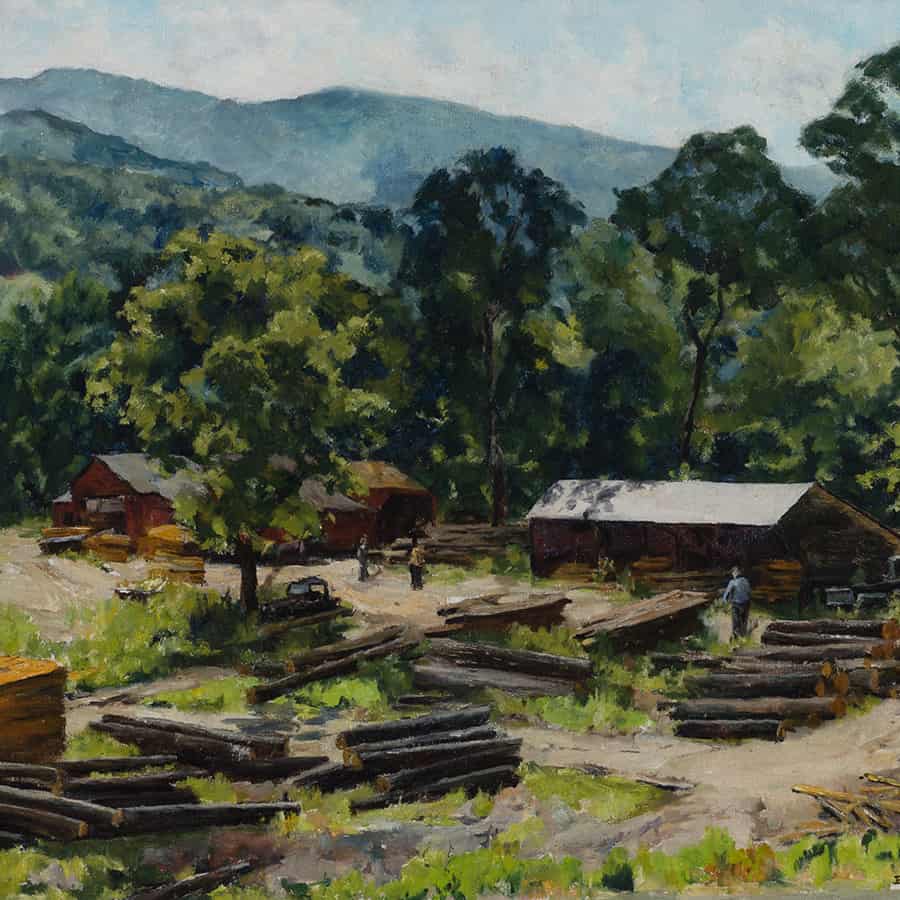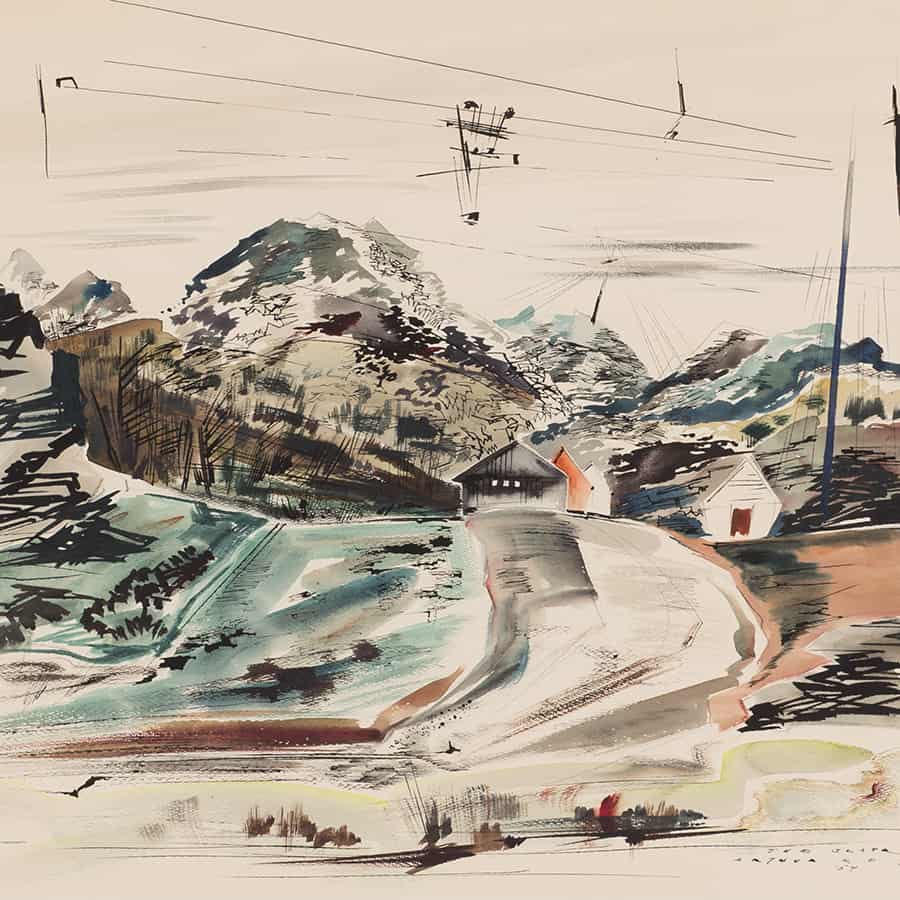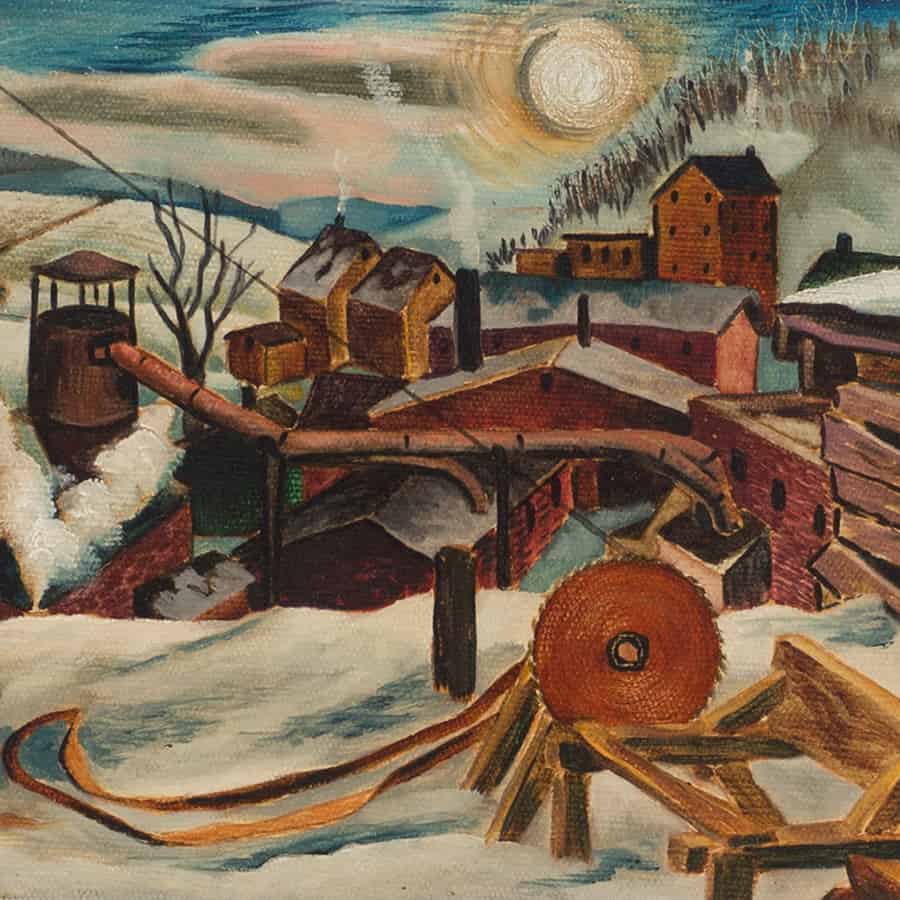Logging & Quarries
Every Vermont farmer with more than a few acres had a woodlot. Observing small-scale logging operations as a farmer skid¬ded one log or one small load of logs out of the forest at the slow and steady pace of a team of horses or oxen, painters in Vermont in the first half of the 20th century witnessed and captured what surely seemed to them was a vanishing way of life.
Some of Vermont’s hardest workers harvested marble, slate, granite, talc, asbestos, soap¬stone, copper, iron ore, ochre, clay, sand, and, in small amounts, even gold and silver from the land. A few artists found these operations interesting enough to paint, or that is to say, they saw something visually interesting in what mining and quarrying did to the otherwise pristine, green landscape.
Excerpt from the book For the Love of Vermont: The Lyman Orton Collection

Edgerton’s Mill, c.1950
Oil on Canvas | 20 x 28 1/8 in.
Beatrice Jackson (1905-1991)
This painting is a scene of a working sawmill, at one time a common sight throughout Vermont. Edgerton’s Mill was at the foot of Rupert Mountain. It is still possible to find sawmills in Vermont, although small local mills like the one Jackson painted have all but disappeared due to the high cost of meeting the strict regulations that are in place today.
Beatrice Jackson was married to artist David Humpreys, and they were both part of the Dorset Painters, a small group of local artists who began showing their work together in the early 1920s. Humphreys’ work is also included in The Orton Collection. Jackson was born in London to American parents, educated in Paris, and later studied in New York at the Art Students League. In fact, her first art show had been in Paris. Her work is sometimes cataloged under the name Jackson or sometimes with her married name, Humphreys.
Jackson survived her husband by more than twenty years and was an active committee and board member of the Southern Vermont Arts Center.

Slate Pile, 1947
Watercolor on Paper | 20 ½ x 28 ¾ in.
Arthur K. D. Healy (1902-1978)
Arthur Healy taught at Middlebury College in Vermont for 25 years, right up through the late 1960s. Even though the artist did not name the location of this scene, huge slate piles were a common sight years ago along the Vermont-New York state line, an area still known as Slate Valley.
Born in New York, Healy trained and worked as an architect and architectural engineer. He has the distinction of serving as an artist-in-residence for one year at the École des Beaux-Arts in Paris, France. He was also an illustrator and writer, joining the art faculty at Middlebury in 1943. Bennington Museum has a collection of his work, as do many other important museums across the Northeast.

Sawmill, c.1940
Oil on Board | 8 ½ x 11 ½ in.
Francis Colburn (1909-1984)
Francis Colburn earned his undergraduate degree from the University of Vermont in 1934, before leaving for New York City where he studied at the Art Students League. He returned to Vermont, and specifically to the University where he taught art and headed the art department.
Colburn’s work was acclaimed in New York City’s art circles, and he exhibited at the Whitney Museum of American Art.
Although this may be one of his post-Depression era compositions, the subject matter is typical of scenes that many of the artists in the Federal Arts Projects (FAP) chose to paint. That is, local scenes of America and Americans – how they lived and where they worked. The FAP funding continued until 1943, and Colburn did work under the program. Although the arts funding came from the Federal government, there was no pressure on the artists to paint in a certain style or to imbue their compositions some pre-determined messaging or meaning.
